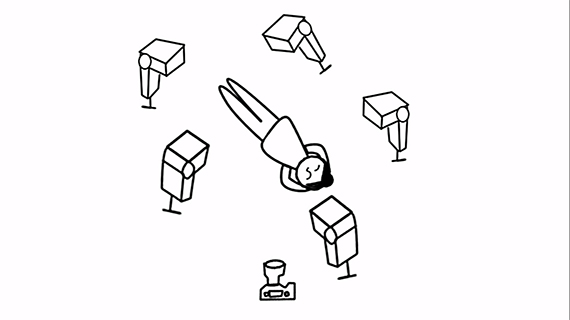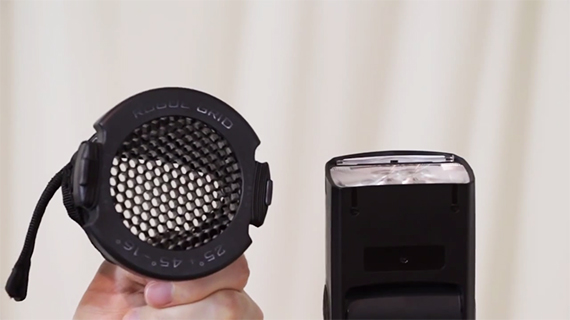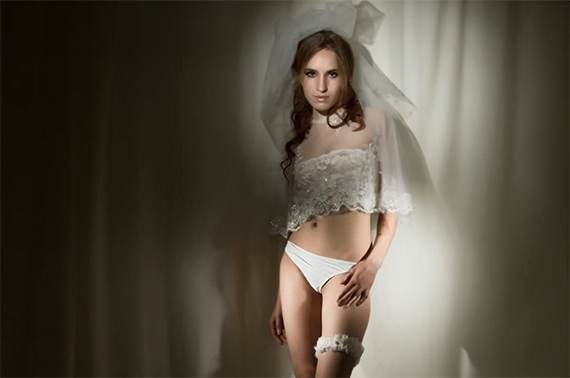If you’ve always hated the fact that you have only one speedlight, since that pretty much leaves you under-powered when compared to protogs, think again. You have all the light in the world to make stunning images. You can use just that one speedlight to flash paint a subject, and laugh all the way to the bank. Intrigued? Check this out:
Gear for Flash Painting
- A single speedlight
- A DSLR (any make and model will do as long as you can set your shutter speed to 10 seconds or bulb mode)
- A few white sheets
- A tripod
- A room that is absolutely pitch black, except for artificial lights
- A model
If the last requirement is a tad out of budget, ask a friend to stand-in so that you can experiment with this setup.
Camera Settings
- ISO 320
- Shutter speed: 10 seconds
- Aperture: f/11
- Use AF to lock focus and set focus to manual to stop the camera from hunting for focus during the exposure.

Camera and Flash Setup for Flash Painting Technique
Speedlight Settings
- Set the flash to ETTL.
- Zoom it (if the function exists) to its maximum. In the demonstration it was set to 105mm
- Use a grid for the speedlight to further focus the light beams.
- Power output can vary depending on the effect you want and the exposure time. Feel free to experiment.
- Hide the flash LCD using a black fabric so that it does not pollute the exposure.
- The flash is hand held and fired using the ‘Test’ button.

A rogue grid controls the output of the flash.
Flash Painting Technique
Okay, now for the technique. You probably would have guessed by now that the technique encompasses a long shutter speed. The next thing to know is that you will be firing the speedlight several times over the course of the exposure to create the desired effect. Also, you will need the model to keep absolutely motionless, thereby cutting out the chances of blur in the final image.

The same technique can be used for a standing model.
Fire several bursts of the speedlight (at least five or six is recommended) during the exposure and from a distance of about a foot to 30 cm. Fire at least one flash burst at the model’s face to expose it properly. Check the results and further fine tune the setup.
This technique can be used to capture a wide variety of images, including wedding boudoir photos.
Like This Article?
Don't Miss The Next One!
Join over 100,000 photographers of all experience levels who receive our free photography tips and articles to stay current:






Leave a Reply